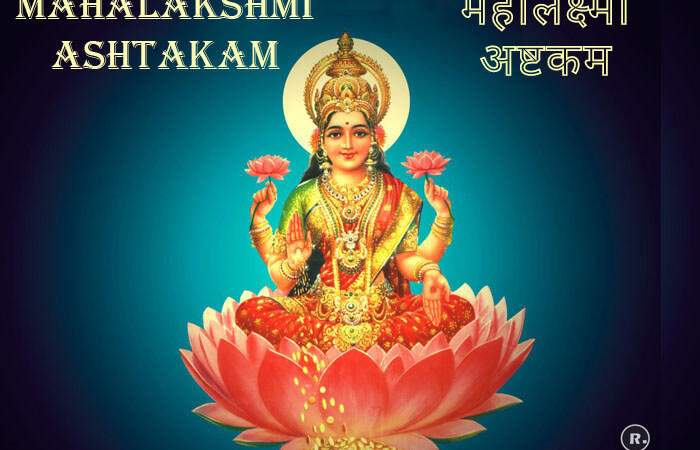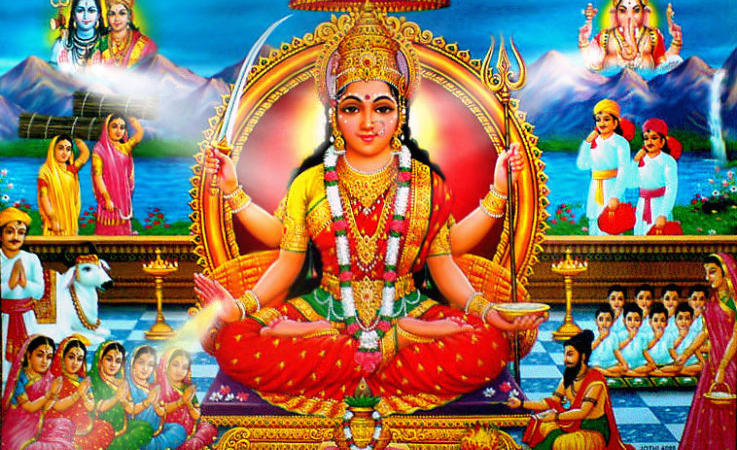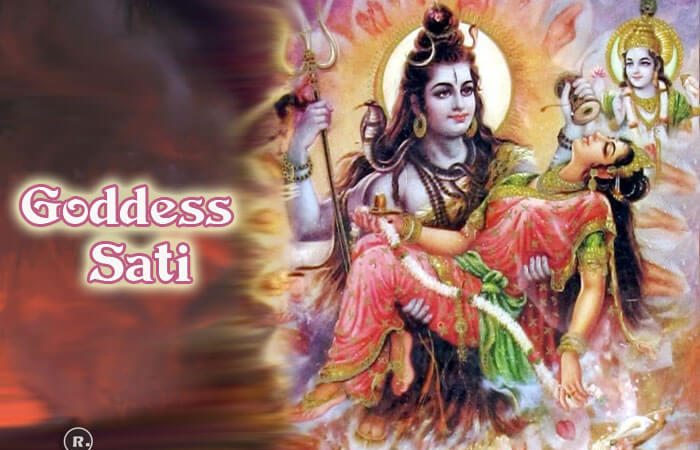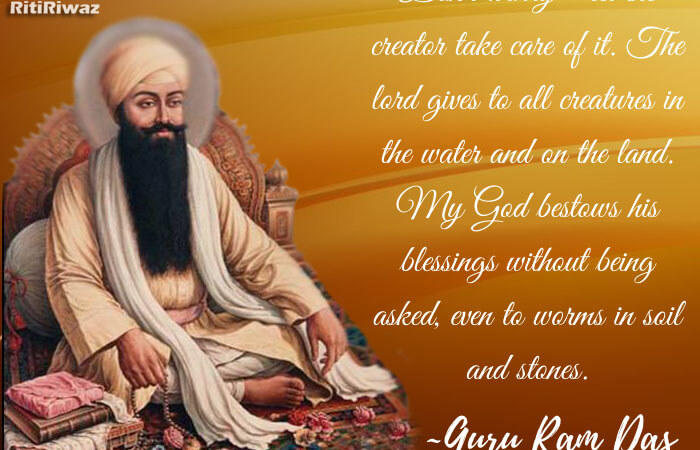15 Famous Durga Temple in India
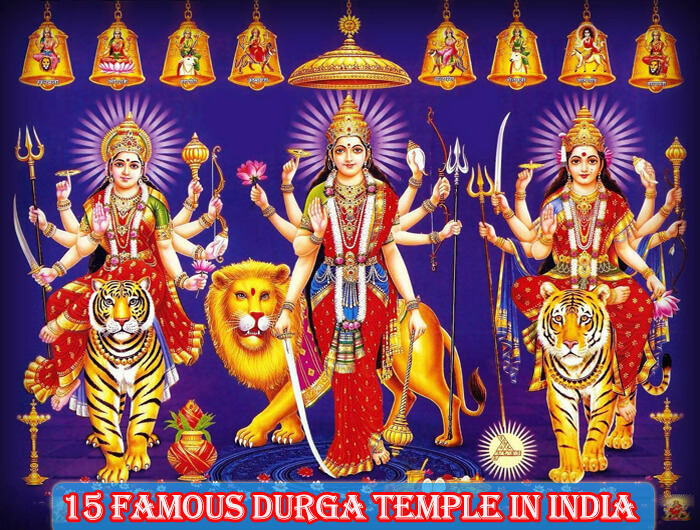
Navratri is one of the most auspicious festivals for Hindus, all across the world. Navratri the nine nights of Maa Durga is celebrated in India twice a year. The Navratri celebrated during the Spring season is called Chaitra Navratri while the Navratri celebrated during the Autumn season is called Sharad Navratri. Hindus worship Goddess Durga and her nine different manifestations.
Nine different forms of goddess Durga are worshipped during Navaratri: these are Shailputri, Bramhacharini, Chandraghanta, Kooshmanda, Skandamata, Katyani, Kalratri, Maha-Gouri, and Shidhidatri. For nine days, people observe fasting and worship in different ways like Saptashati recitation of Maa Durga and Jagran, Havan, etc. Sharad Navratri is popular as Durga puja with huge pandals been set up at West Bengal, Gujarat, Maharashtra for Durga puja and Garba, Dandiya Rass.
India holds infinite temples of God and Goddess and Maa Durga is one of the prime deities among them. There are 51 Shakti Peethas situated in India which you can visit during Navratri. We are bringing the top 15 temples visited during the festival of Navratri in India.
Vaishno Devi in Katra, Jammu & Kashmir
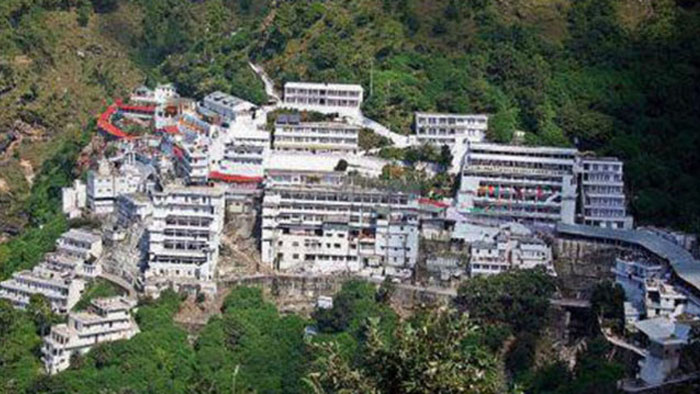
Vaishno Devi shrine is one of the most popular and holiest pilgrimages of all. It is situated at an altitude of over 5,000 feet, 60 km north of Jammu, it sees the maximum number of devotees from all over the world. Especially during the festival of Navratri, this temple sees huge crowds of devotees. Goddess Durga resides in a holy cave of Trikuta, the thee-peaked mountain.
Instead of idols and pictures, you will see three natural rock formations called Pindies of Mata kali, Mata Saraswati, and Mata Lakshmi. The three pindies differ in color and texture even when they have the same source rock. Devotees have to trek about 12km from the base camp in Katra to reach the main temple. There are services of helicopters, horses, ponies, and palanquins to cover the trek for those who require it. Devotees while going up the trek chant ‘Jai Mata Di’, there is a divine feeling when one reaches the shrine ultimately. It is said that unless the goddess gives one a call the person does not get a chance to visit the shrine.
Naina Devi Temple, Bilaspur
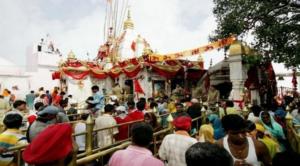
Naina Devi temple on a hilltop of Bilaspur in Himachal Pardesh is quite famous where the heavy rush of devotees is noticed on Navratri. The temple is located where the eyes of Lord Shiva’s consort Sati are supposed to have fallen when her flaming body was cut into 51 pieces by Vishnu’s chakra. Shri Naina Devi Temple is also named by Mahishapeeth because Goddess Naina Devi defeated the demon Mahishasura. The temple is situated at an altitude of 1177 meters on a triangle hill also known as Naina Dhar Hill. The temple is overlooked by a beautiful lake Gobind Sagar which was created by Bhakra Nangal Dam.
During the Chaitra, Shravan, and Ashwin Navrati huge crowd of devotees can be seen and special fairs are organized during this time. You can see visitors from Punjab, Haryana, Delhi, Uttar Pradesh, and other corners of the country. It is said that Naina Devi never disappoints her devotees and whoever gets her Darshan is granted the fruition of their desires almost immediately.
Chamunda Devi, Himachal Pradesh
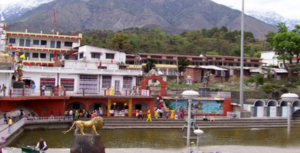
Chamunda Devi temple also known as Chamunda Nandikeshwar Dham is dedicated to Goddess Chamunda Devi who is a form of Goddess Kali. The name Chamunda or Camunda is a combination of ‘Chanda’ and ‘Munda’, two monsters that Devi killed. It is believed that Shiva and Shakti reside in this temple. On either side of Devi’s idol are Hanuman and Bhairo. Actually, these lords are considered as the guards of the Goddess. Lord Shiva lives in the form of Nandikeshwar close to this temple.
The temple is situated in the Kangra district of Himachal Pradesh on the banks of the river Ban Ganga (Baner), devotees after offering their prayer to Goddess Chamunda take a dip in Ban Ganga. The temple is of high religious importance and a large number of devotees gather here during the festival of Navratri in March-April and September-October.
Jwala Ji Devi Temple, Kangra
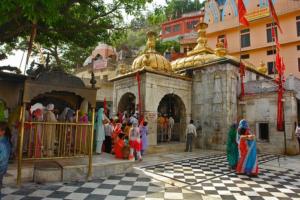
Jwala Devi Temple is located 30 km away from the south of Kangra Valley in Himachal Pradesh. Jwala Ji temple is part of 51 Shakti Peethas. Here the temple doesn’t have any idol of Goddess as the Goddess is residing in the form of flames. These eternal flames continue to burn, there are nine such flames. During the Navratris, it becomes the center of religious activities, and huge fairs are organized. Devotees from all over India come here during Navratri to get the blessings of the Goddess. Some people also bring red-colored flags for the goddess.
Mansa Devi Temple, Haridwar
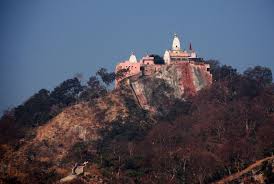
Mansa Devi Temple, Haridwar is a Hindu temple dedicated to the goddess Mansa Devi in the holy city of Haridwar in Uttarakhand. It is situated atop the Bilwa Parvat on the Shivalik hills and is also called Bilwa Tirth. Mansa Devi temple is one of the most venerated temples of the goddess Mansa Devi and is, therefore, a major pilgrimage site.
To reach the majestic temple, one needs to cover a distance of 2.5 km by trekking up the stairs built along the path that leads to the temple. The temple holds great religious importance and is one of the Siddh Peeths. the temple is known for being the holy abode of Mansa Devi who is a form of Shakti that has emerged from the mind of the sage Kashyapa. The term Mansa means wish and it is believed that the goddess fulfills all the wishes of a sincere devotee. Devotee tie threads to the branches of a tree located in the temple wishing something and come back to untie the thread when their wishes are fulfilled.
Maha Kali Devi Temple in Ujjain
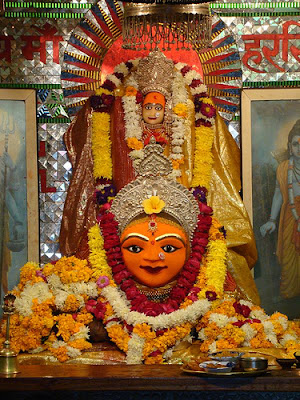
Goddess Mahakali at Ujjain, a Shakthi Peetam, is known as Hara Siddhi Mata, Aradhana goddess of King Vikramaditya. He severed his head off, as an offering 11 times, in front of Goddess Hara Siddhi Mata. Pleased by his devotion, Goddess restored his head each time.
Goddess Mahakali is also known as Rakt Dantika or Chamnuda. Mahakali appeared to kill the demon Andhakasur. Andhakasur, the ruler of Ujjaini in those days, was blessed with a power that every drop of his blood that touched the ground would produce a new Andhakasur.
In order to destroy the demon, Lord Shiva Himself pierced Andhakasur with His Trishul. Goddess Mahakali appeared along with her Matrikas, drank the blood that was shed, and devoured the thousands of new Andhakasur thus formed.
Situated in the banks of River Kshipra, is Lord Mahakaleshwar mandir, which is not only a Shakthi peetam (Goddess Mahakali), but one among the twelve jyotirlingas (Lord Mahakaleshwar).
Dakshineswar Kali Temple, West Bengal
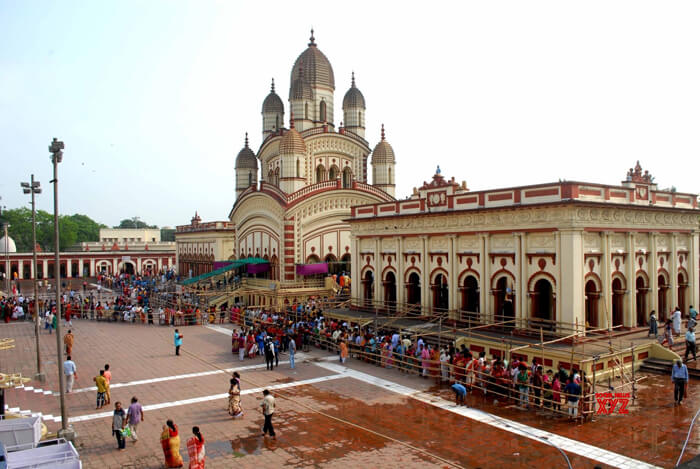
Dakshineshwar Kali Temple is a famous Hindu temple which is situated on the eastern bank of River Hoogly. The presiding deity of this temple is Goddess Bhavatarini who is a facet of Goddess Kali. The temple has gained its solid structure by Rani Rashmoni who is a philanthropist and an aficionado of Kali.
Another name of Dakshineswar Kali Temple is Navaratna Temple. Devotees from all parts of India visit this temple to seek the blessings of the Mahakali. The temple is also important for its association with Sri Ramakrishna Paramhansa and Sri Sarada Devi both of whom spent a considerable part of their lives in this temple.
Chamundeshwari Temple in Mysore
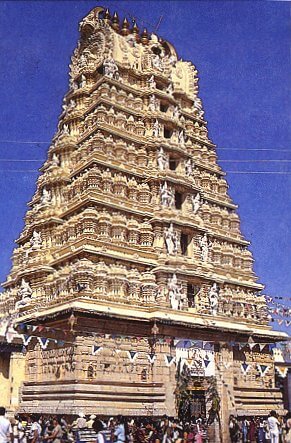
The Chamundeshwari Temple is located on the top of Chamundi Hills about 13 km from the palace city of Mysore in the state of Karnataka. This temple is considered one of the oldest temples in Mysore. The temple is dedicated to Sri Chamundeswari, the titular deity of the Mysore Royal Family also described as ‘Mahishasura Mardini for having killed the buffalo headed demon Mahishasura.
The Chamundeshwari Temple is considered a Shakti Peetha and is one among the 18 Maha Shakti Peethas. This place is also mentioned as the Shakthi petha when Lord Shiva took the corpse of Sati Devi and wondered in great sorrow. It is believed that a few hairs from the corpse fell here. The Shiva temple built here was an incarnation of this epic story. Hence this is one of the Shakthi Peetha either a power full place of Durga Devi. The most important festival celebrated in Chamundeshwari Temple is Mysuru Dushera and Navaratri.
Kamakhya Temple, Assam
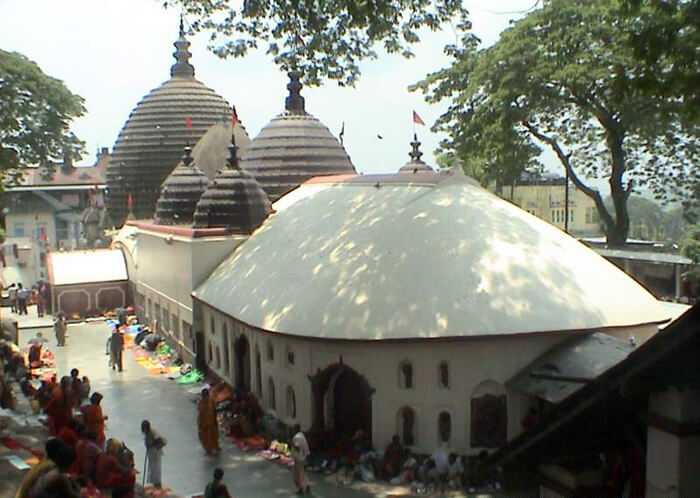
Kamakhya temple is known as a menstruating goddess. Representing The Female Power of Shakti and celebrating a woman’s ability to conceive, this temple doesn’t have an idol of Kamakhya to worship but a yoni (vagina). The Goddess is called the bleeding Devi or menstruating Goddess because, in the month of Ashadha (June), the Devi starts menstruating automatically.
According to legend, it marks the site where Sati’s womb fell. It’s the oldest of the 51 Shakti Pithas that still stands today and sees thousands of tourists, visitors, and spiritual pilgrims each year. Especially during Navratri, the temple is the center for numerous devotees coming from various parts of the country.
Amba Mata Temple, Gujarat
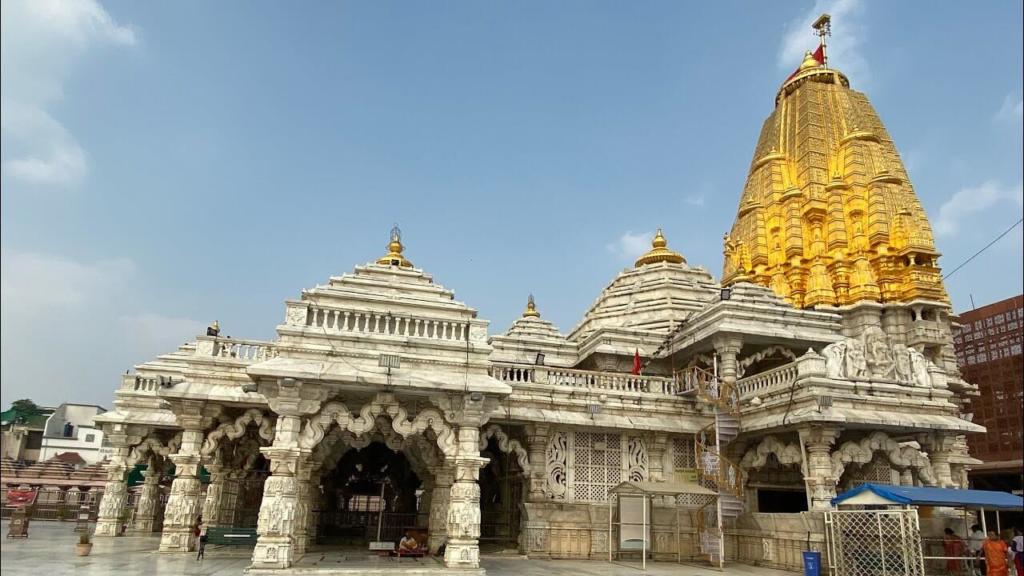
Amba Mataji Temple is one of the major Shakti Peeths in India, situated at the top of the Girnar mountain. There is no idol installed inside the temple. The Goddess is worshipped in the form of sacred “Shree Visa Yantra”. Maa Amba is a form of Goddess Durga. No one can see the Yantra with the naked eye, devotees are asked to tie their eyes with a white cloth before they are allowed to worship the Yantra.
Karni Mata Temple, Rajasthan
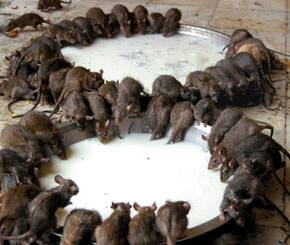
Karni Mata Temple or Temple of Rats is a Hindu temple dedicated to Karni Mata at Deshnoke, 30 km from Bikaner, in Rajasthan, India. The main deity in the temple is Goddess Karni Mata who is regarded as the incarnation of Maa Durga & The kabas are believed to be the manifestations of Karni Mata herself and her sons. The temple is home to over 20,000 rats also called “Kabas or “little children,”. These rats are treated sacred. Hence, are fed, protected, and worshipped here.
Apart from the presence of these rats, the temple is also famous for the Karni Mata Festival aka Karni Mata Fair held twice a year during Navratri time that is during April-May and October-November. The fair is dedicated to Karni Mata who is the local deity of the people of Rajasthan. During Navratri, the temple witnesses a huge influx of locals come to seek Karni Mata’s blessings.
Durga Temple, Varanasi, Uttar Pradesh
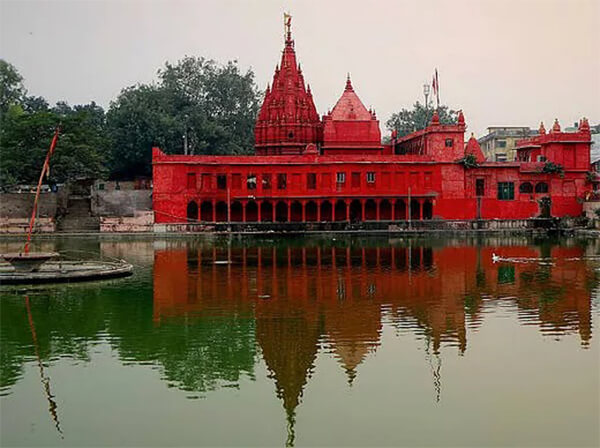
Durga temple is one of the important temples in Varanasi and is built in the 8th century by a Bengali Queen. The temple is dedicated to Goddess Durga and it is believed that the idol of Durga was not installed by humans but appeared on its own in the temple. Next to the temple is a Durga Kund (pond) that was earlier connected to the river Ganges. It is believed that Goddess Durga is present at this place for centuries.
It is recommended to take a dip in the Durga Kund during the auspicious Navaratri festival and offer prayers here to wash away sins, disease, and anguish. Thousands throng this temple on the fourth day (Chaturthi) of Navaratri.
Danteshwari Temple, Bastar, Chhattisgarh
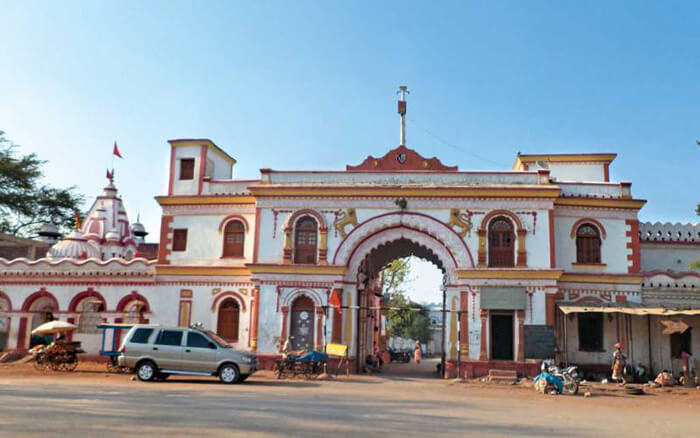
Danteshwari Temple situated in Jagdalpur Tehsil of Chhattisgarh is one of the 52 Shakti Peeths of Goddess Sati. According to a legend, it’s the spot where the Daanth or Tooth of Sati fell, during the episode when all the Shakti shrines were created in the Satya Yuga.
Every year during Dusshera thousands of tribals from surrounding villages gather here to pay homage to the goddess, when her idol was taken out of that ancient Danteshwari temple and then taken around the city in an elaborate procession, now a popular tourist attraction part of the ‘Bastar Dussehra’ festival.
Tripura Sundari Temple, Udaipur, Tripura
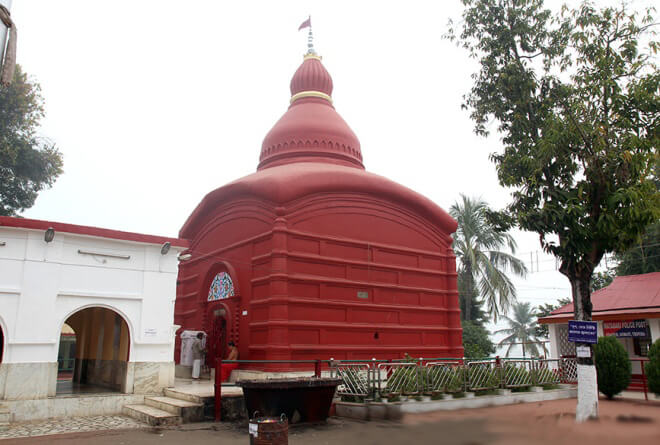
Tripura Sundari Temple is a Hindu temple of Goddess Shakti, better known locally as Devi Tripureshwari. The temple is situated in the ancient city of Udaipur, about 55 km from Agartala, Tripura. The Hindu shrine is popularly known as Matabari and is one of the 51 Shakti Peethas of the Goddess Sati across the country.
The right leg of Sati Devi’s body is believed to have fallen here. The idol of Devi Tripureshwari is made of Kasti Stone which is reddish black in color. Navratri is observed here, but it is Deepavali or Diwali which turns into a major festival. Every year on the occasion of Diwali, a famous Mela takes place near the temple which is visited by more than 0.2 million pilgrims.
Mangala Gauri Temple, Gaya, Bihar
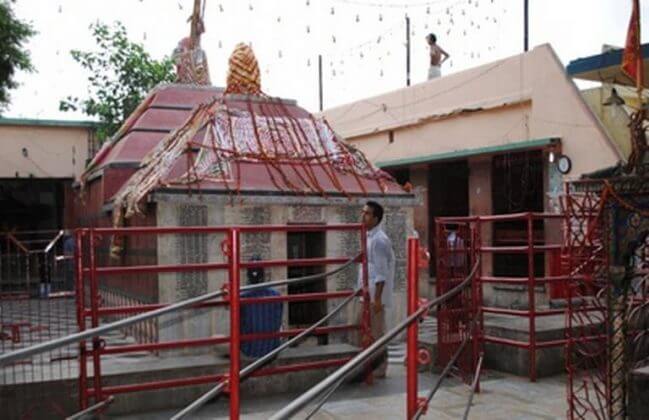
Mangala Gauri temple is one of the Shakti Peeth (Ashtadasa Shakti Peeth) in India. Legend has it that Devi Sati’s breast fell at the site that houses the temple now. It is situated at the top of the hill called Mangala hill. The main temple is a very small temple and only 2 to 3 members can go into the temple at a time. There is no idol in the temple. We can see the Breast of Satidevi in Deepa lighting.
Hindus from across the globe visit here to seek blessings from the Goddess. Must visit during the Navratri months if you wish to be a part of the grand celebrations here. It is believed that whoever comes to maa Durga with his wishes and prayers, returns successfully with all of the prayers and wishes come true.


